Info
Subfamily: Panicoideae
Genus etymology: Echinochloa = "hedgehog grass" [Greek] refering to the awned florets which are tightly arranged resembling a hedgehog
Species etymology: crus-galli = "cock's foot" [Latin] refering to the inflorescencse structure resembling that of a rooster's foot
Photosynthetic type: C4 (warm season)
Nativity: naturalized - accidental
First recorded in Hawaiʻi: 1846
Map
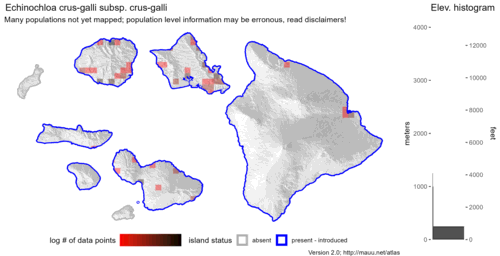

Inflorescence
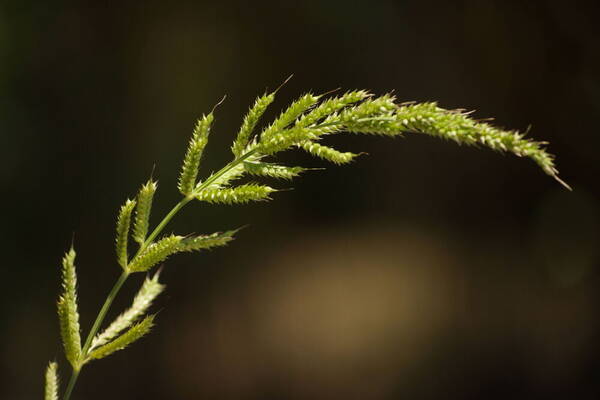
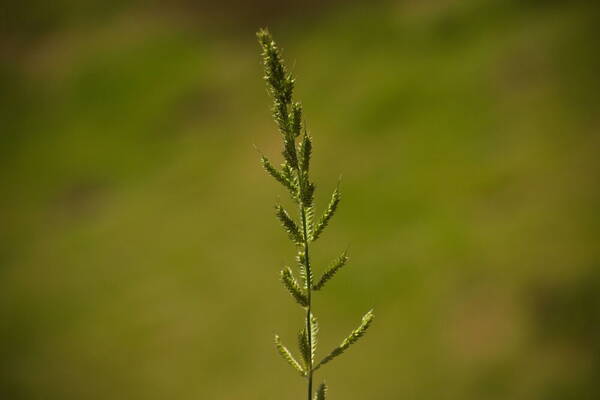

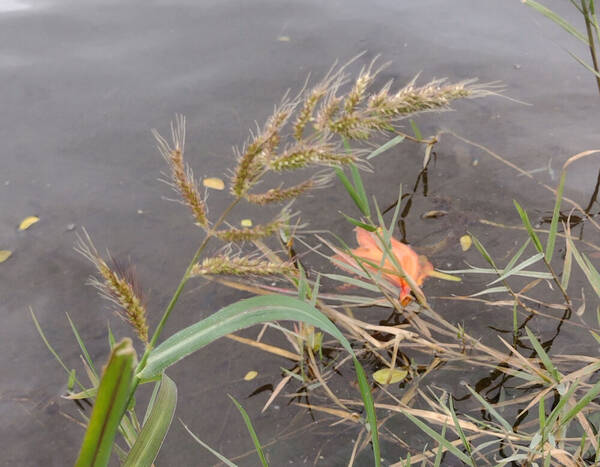
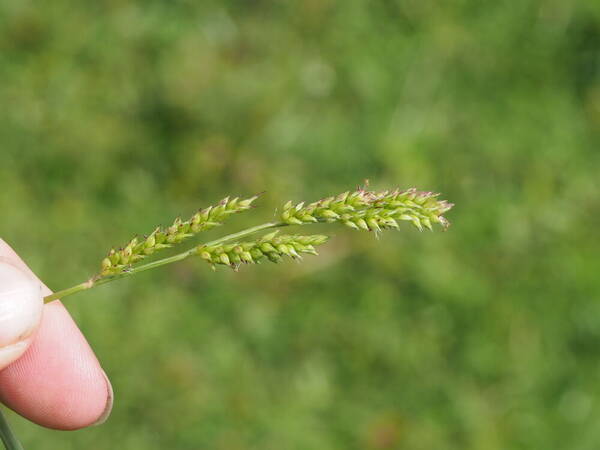
Habit
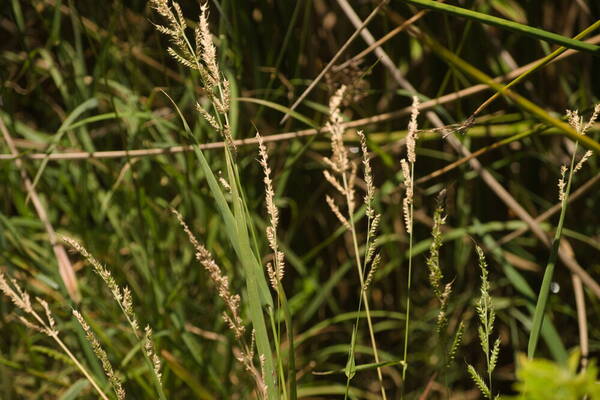
Spikelets
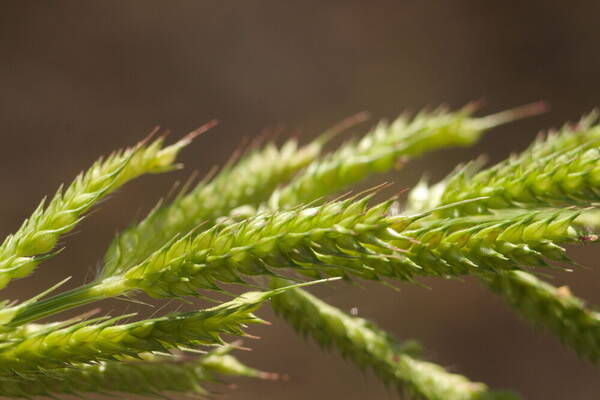
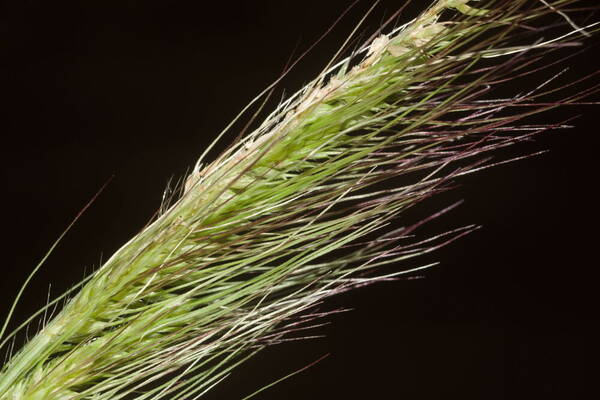
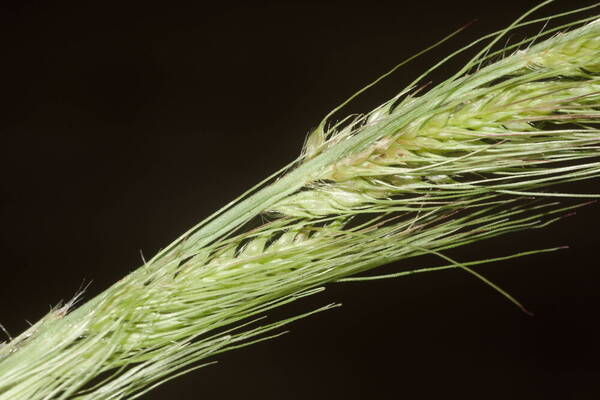
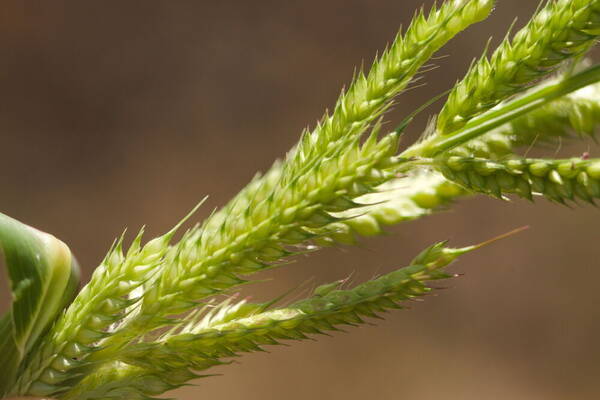
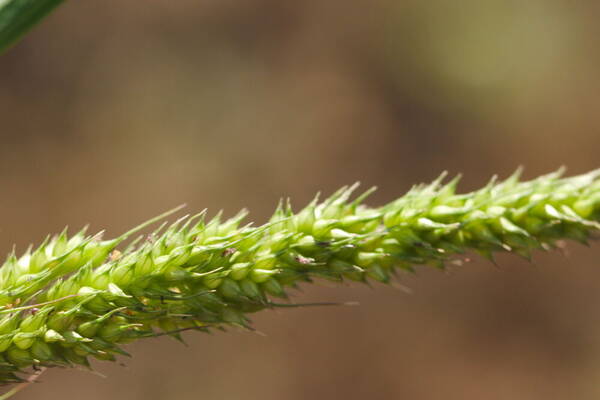
Landscape
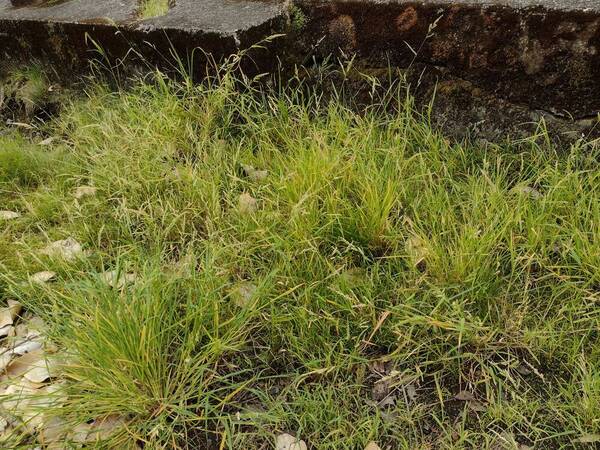
Description
Coarse annual; culms 25–100 cm. high, erect or spreading. Leaf-blades 7–35 cm. long, 4–20 mm. wide; ligule absent; sheaths glabrous, rarely appressed hairy. Inflorescence linear to ovate, 6–22 cm. long, the racemes untidily 2–several-rowed, the longest 2–10 cm. long usually with short secondary branchlets at the base. Spikelets ovate-elliptic, mostly 3–4 mm. long, hispid; lower floret barren, acuminate or with an awn up to 5 cm. long; upper lemma 2–3 mm. long, including the short herbaceous tip.
(Description source: Clayton, W.D. & Renvoize, S.A. 1982. Flora of Tropical East Africa. Gramineae (Part 3). A.A. Balkema, Rotterdam. 448 pp. )
Coarse annual. Culms 25–100 cm. high, erect or ascending; ligule absent; leaf laminae 62–20 mm. wide. Inflorescence 6–22 cm. long, linear to ovate; racemes untidily 2-several-rowed, the longest 2–10 cm. long usually with short secondary branchlets at the base. Spikelets mostly 3–4 mm. long, ovate-elliptic, hispid. Inferior lemma acuminate or with an awn up to 5 cm. long. Superior lemma 2–3 mm. long, including the short herbaceous apex.
(Description source: Launert, E. & Pope, G.V. (eds.). 1989. Flora Zambesiaca. Volume 10. Part 3. Kew, London. 152 pp. )
Plants annual. Culms 30-200 cm, spreading, decumbent or stiffly erect; nodes usually glabrous or the lower nodes puberulent. Sheaths glabrous; ligules absent, ligule region sometimes pubescent; blades to 65 cm long, 5-30 mm wide, usually glabrous, occasionally sparsely hirsute. Panicles 5-25 cm, with few-many papillose-based hairs at or below the nodes of the primary axes, hairs sometimes longer than the spikelets; primary branches 1.5-10 cm, erect to spreading, longer branches with short, inconspicuous secondary branches, axes scabrous, sometimes also sparsely hispid, hairs to 5 mm, papillose-based. Spikelets 2.5-4 mm long, 1.1-2.3 mm wide, disarticulating at maturity. Upper glumes about as long as the spikelets; lower florets sterile; lower lemmas unawned to awned, sometimes varying within a branch, awns to 50 mm; lower paleas subequal to the lemmas; upper lemmas broadly ovate to elliptical, coriaceous portion rounded distally, passing abruptly into an early-withering, acuminate, membranous tip that is further demarcated from the coriaceous portion by a line of minute hairs (use 25x magnification); anthers 0.5-1 mm. Caryopses 1.3-2.2 mm long, 1-1.8 mm wide, ovoid or oblong, brownish; embryos 59-86% as long as the caryopses. 2n = 54.
(Description source: Barkworth, M.E., Capels, K.M., Long, S. & Piep, M.B. (eds.) 2003. Flora of North America, north of Mexico. Volume 25. Magnoliophyta: Commelinidae (in part): Poaceae, Part 2. Oxford University Press, New York. 783 pp http://floranorthamerica.org/Echinochloa_crusgalli )
Annuals; culms stout, tufted, ascending in upper part, (1.5-)3-10(-14) dm tall, geniculate and decumbent below, glabrous, leafy. Sheaths glabrous; ligule absent; blades flat, 4-12(-16) mm wide, margins scabrous, a few papillae near the collar, these sometimes with hairs. Inflorescences paniculate, erect or nodding, 5-21(-27) cm long, consisting of 5-12(-20) racemosely arranged lateral branches; spikelets 2.8-3.5 mm long, somewhat turgid to laterally compressed, apex acuminate to awned; first glume broad, 1.2-1.6 mm long, clasping, 3- nerved, scaberulous, apex apiculate to caudate, sometimes with an awn up to 0.5 mm long, second glume 2.5-3.2 mm long, 5-nerved, the lateral nerves pectinate near the margins and scabrous toward base, apex acuminate or with an awn 0.7-1.5 mm long; first lemma awned, the awn 0.5-30 mm long, palea usually well-developed, second lemma indurate, plano-convex, 2.2-3 (-3.3) mm long, smooth and glossy, 5-9- nerved, apex abruptly acute, awned, the awn up to 0.5 mm long; palea similar in texture to lemma. Caryopsis pale brown, suborbicular or ovoid, 1.4-2 mm long, 1.2-1.6 mm in diameter. [2n = 36, 42, 48, 54, 72.]
(Description source: O’Connor, P.J. 1990. Poaceae, pp. 1481–1604. In: Wagner W.L., Herbst D.R. & Sohmer S.H. (eds.)., Manual of the flowering plant of Hawaiʻi. Vol. 2. University of Hawaii Press & Bishop Museum Press, Honolulu )